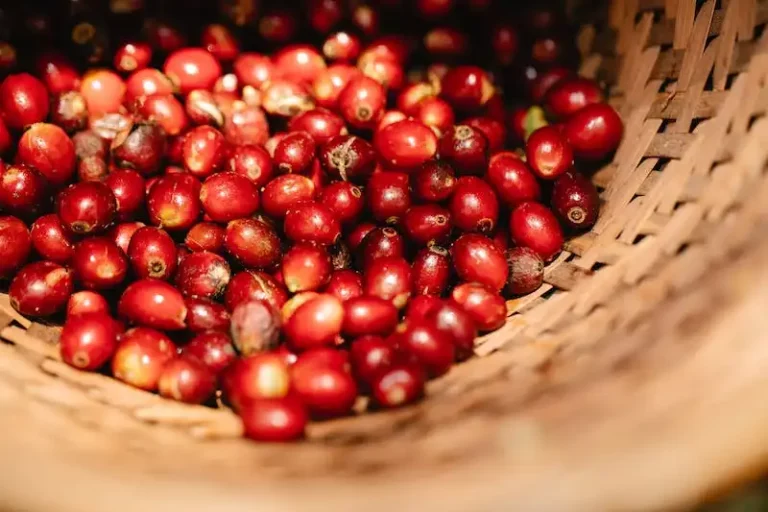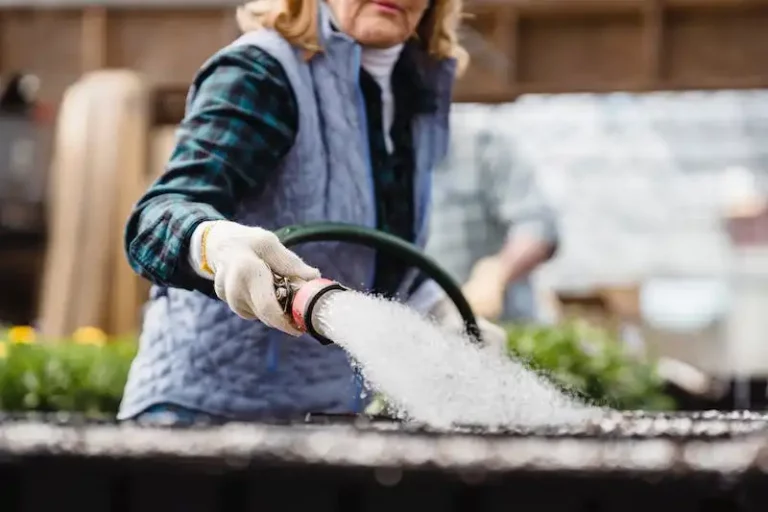If you’re a gardener in the UK and want to add some grace and beauty to your garden, look no further than the Mahonia. With its variety of flowers and graceful shape, the Mahonia is a must-have for any garden. Whether you’re a novice or an experienced gardener, there are some basic tips you should know for growing and caring for Mahonias in the UK.
In the spring, Mahonias produce clusters of beautiful flowers that add a splash of color to any garden. If you wish to grow Mahonias in your garden, you’ll want to learn some tips on how to properly care for them. One tip is to position them in an area that receives plenty of sunlight, as this is crucial for their growth. Additionally, Mahonias should be pruned into a desirable shape in late winter or early spring.
Watering is very important when it comes to caring for Mahonias. Like many other plant species, they require regular watering, especially during dry spells. However, be careful not to overwater, as this can lead to root rot. As for pests and diseases, Mahonias are generally not affected by many common garden pests. However, they can be susceptible to rust, so it’s important to keep an eye out for any signs of this disease.
Mahonias are also known for their scented flowers, which are loved by bees and other beneficial insects. The berries that form in late summer are not only beautiful to look at, but can also be used in cooking. With a wide variety of mahonias to choose from, you’re sure to find one that suits your garden’s needs. Some popular varieties include Mahonia x media ‘Lionel Fortescue’ and Mahonia x media ‘Winter Sun’.
In conclusion, Mahonias are a great addition to any UK garden. With their stunning flowers, graceful shape, and various forms, these plants can bring beauty and joy to any gardener. Just learn the basics of growing and caring for Mahonias, and you’ll be rewarded with a stunning specimen in your garden.
**Tip**: Mahonias are sometimes called “Oregon grape” because of their blueberry-like fruits.
For more information on caring for Mahonias, visit your local nursery or check out gardening resources online. With proper care and attention, your Mahonia will thrive in your garden and eventually become a winter-blooming sensation.
Mahonia superb in winter
Mahonia is a winter-flowering evergreen shrub that adds a touch of color and fragrance to UK gardens during the colder months. In addition to its beautiful blooms, it also offers several other benefits, making it a popular choice among gardeners.
The basic pruning of mahonias is simple and can be done after the plant has finished flowering. This involves removing any dead or damaged branches and shaping the shrub to maintain its desired form. Pruning also helps to improve airflow and circulation, which can reduce the risk of diseases such as mildew and rust.
Mahonia produces glossy green foliage throughout the year, providing an attractive backdrop for its vibrant yellow flowers. The foliage is also highly scented, adding a pleasant fragrance to the garden. In the winter, the leaves may develop a powdery frost-like appearance, which only enhances their beauty.
As the flowers fade, they are replaced by clusters of small blue-black berries, which are loved by birds. These berries can also be used for cooking, with the consent of local wildlife agents, and are said to have a tart flavor, similar to cranberries.
One of the great things about mahonias is that they are relatively low maintenance. Once established, they are quite drought-tolerant and require minimal watering. They also have few pest problems and are rarely affected by diseases.
If you’re looking to grow more mahonias in your garden, it’s best to choose a location with partial shade to full sun and well-draining soil. These shrubs can be propagated from cuttings or bought from a nursery.
To summarize, mahonias are a fantastic addition to any UK garden, especially during the winter months. They provide beautiful flowers, scented foliage, and beneficial berries for wildlife. With some basic pruning and care, you can enjoy the beauty of these shrubs year after year.
Here are a few tips to keep in mind when caring for mahonias:
- Prune mahonias after the flowers have faded to maintain their shape and encourage bushy growth.
- Avoid pruning mahonias in the summer, as this can lead to powdery mildew.
- Provide good airflow and circulation around the plant to prevent diseases.
- Fertilize mahonias in the spring with a slow-release fertilizer.
- Water mahonias regularly during dry spells, especially in their first year of growth.
With these simple tips, you’ll be able to successfully grow and maintain mahonias in your UK garden, ensuring they continue to thrive and provide beauty throughout the winter months.
Propagating mahonia
Mahonia is a genus of shrubs that are native to Asia, but there are also several species that are native to the UK. Mahonia is prized for its evergreen foliage, yellow flowers, and sometimes, fruit. There are many varieties of mahonia available, each with its own unique characteristics. Some varieties, such as Mahonia repens, have a low, creeping form, while others, like Mahonia aquifolium, have a more upright and graceful growth habit.
Propagating mahonia is a simple process that can be done in the winter. First, collect ripe fruits from a healthy mahonia plant. The fruits are bright blue berries and can be used for cooking. Extract the seeds from the fruit and soak them in warm water for 24 hours to help with germination. After soaking, plant the seeds in a moist, well-draining potting mix and place them in a bright location. Keep the soil consistently moist, but not waterlogged. Germination should occur within 2-4 weeks.
Another method of propagating mahonia is through division. In the early spring, when new growth starts to emerge, dig up a mature mahonia plant and carefully separate it into smaller sections. Each section should have several healthy roots and shoots. Replant the divided sections in well-draining soil and provide regular watering to help establish the new plants.
Mahonia plants require minimal care and are generally resistant to diseases and pests. However, they can be affected by powdery mildew or rust, especially in areas with poor air circulation or during periods of damp weather. To help prevent these diseases, ensure that there is adequate spacing between plants and provide proper watering to avoid overwatering or drought stress.
When it comes to pruning mahonia, it is best to do so after flowering in the spring. Simply remove any dead or damaged branches and shape the plant as desired. Pruning can help maintain a compact and tidy growth habit and promote better flowering in the future.
In conclusion, mahonia is a superb shrub for the UK gardener. Its glossy evergreen foliage, scented winter-blooming flowers, and sometimes, colorful fruit make it a valuable addition to any garden. Propagating mahonia can be done through seed sowing or division, and caring for these plants is relatively simple. With the right care and attention, mahonia can thrive in a variety of growing conditions.
For more information about mahonia and valuable caring advice, learn from experienced gardeners or consult a nursery that specializes in growing mahonias. Their knowledge and expertise can help you navigate the world of mahonia and ensure you have success in growing these beautiful plants.
Source: ‘Mahonia: Caring for mahonia plants in winter’, The Royal Horticultural Society
Pruning and caring for mahonia
Mahonia is a versatile and beautiful shrub that offers many benefits to the UK gardener. Its unique form and glossy green foliage make it a striking addition to any garden. Mahonia also attracts bees with its open flowers and provides berries for birds during the winter months. With its basic care and simple pruning tips, mahonia is a great plant to have in your garden.
When it comes to pruning mahonia, it’s important to understand that different varieties require slightly different care. The most common species, Mahonia aquifolium, can be pruned anytime from late winter to early spring. You can trim back any dead or damaged shoots to maintain the shape of the plant. However, be mindful not to prune too heavily, as this can affect the flower production for the year.
If you’re working with a larger variety of mahonia, such as the Mahonia x media ‘Winter Sun’ or ‘Charity’, it’s best to prune in late winter or early spring. Remove any dead or diseased branches, as well as any crossing or rubbing branches. This will help open up the center of the plant and promote better air circulation, reducing the risk of mildew.
In terms of caring for your mahonia, it’s important to note that this shrub prefers a slightly acidic soil. Adding compost or well-rotted manure to the planting hole will help provide the best growing conditions. Mahonia is also a relatively low-maintenance plant, requiring little watering once established. However, it does benefit from a layer of mulch around the base to help retain moisture.
If you have a mahonia hedge, you’ll want to prune it in late winter or early spring to maintain its shape and keep it compact. Regular pruning will also encourage new growth and promote a denser hedge. Make sure to remove any dead or diseased branches, as well as any overly long or straggly shoots.
In summary, mahonias are a beautiful and beneficial addition to any UK garden. With their unique form, attractive foliage, and vibrant flowers, they are sure to make a statement. By following the basic care and simple pruning tips mentioned above, you can ensure that your mahonias thrive and provide enjoyment for years to come.

